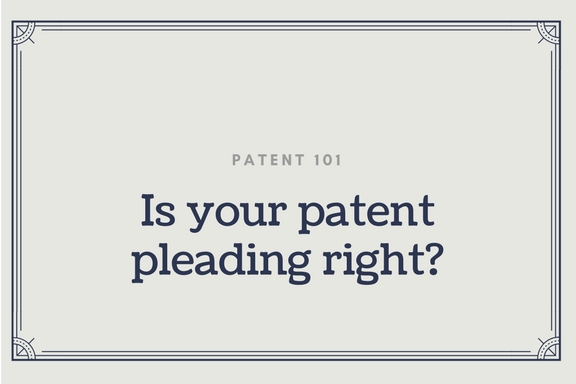
Patents can be invaluable to individuals and businesses, and can be critical to their growth and success. They offer the owner exclusive rights to practice the claimed subject matter across Canada. This includes the right to make, use, sell or authorize others to practice the invention. Patent infringement occurs when a third party intrudes on these rights either by direct infringement or inducing others to infringe.
In infringement litigation, a patentee must submit sufficient information on the patent and infringement details in a patent pleading. How do you know how much detail is required?
Infringement can pose serious threats to inventors. It can negatively impact the goodwill of the business, resulting in business and customer loss, and hinder growth and success. The details in the patent pleading help in identifying and judging whether infringement has occurred. This makes a patent pleading all the more important. A good example of what is required in patent pleadings is the case of Mostar Directional Technologies Inc. v. Drill-Tek Corporation et al.. Let us look at the matter in detail.
The Case of Mostar Directional Technologies Inc. v. Drill-Tek Corporation et al.
In this case, the plaintiff Mostar alleged that the defendant Drill Tek infringed certain issued patents related to down hole drilling technologies. In the patent infringement pleading, the plaintiff listed the defendant’s infringing model names and the patent claims that were allegedly infringed. Recently, the Federal Court issued the decision in the case where it struck the plaintiff’s pleading and dismissed the case. The court held that the pleading failed to provide material facts as to ‘how’ the claims were infringed.
The Supreme Court has stated that all pleadings must include substantial material facts to support the allegations. This includes facts stating the right to patent, patent claims, infringement, how the infringement occurred, and cause of action. In a 1996 case of Dow Chemical v. Kayson Plastics & Chemicals, the court identified particulars of a patent pleading that must be included –
- Facts by virtue of what the law recognizes as a right belonging to the plaintiff – the patent right and claims
- Facts that constitute infringement by the defendant on that right – particulars of infringement including the scope, the how, and causes of action.
Moving back to the recent case of Mostar, the court did find the defined right and the claims being infringed but not the how of infringement. The court explained that the lack of sufficient details to infringement prevented the defendant from intelligently pleading in response. It also stated that there was no stringent rule regarding the pleading of the language of the claims of the patent. But, at times the patentee must repeat or paraphrase the language of the claims to define the infringing activities of the defendant. Since there were no clear details on how the infringement was conducted, the pleading was struck and dismissed. But, the decision was free of prejudice as the court allowed the plaintiff to file a new action in the case of new, non-speculative circumstances.
The decision serves as a reminder that every case is different and requires a level of specificity in patent pleading. A close look at the patents, language of the patent claims, and the infringing products can be helpful in predicting the level of facts demanded by a specific patent pleading. This, along with help from a reliable patent attorney, may be useful in reducing the risk of dismissal at the pleading stage.




